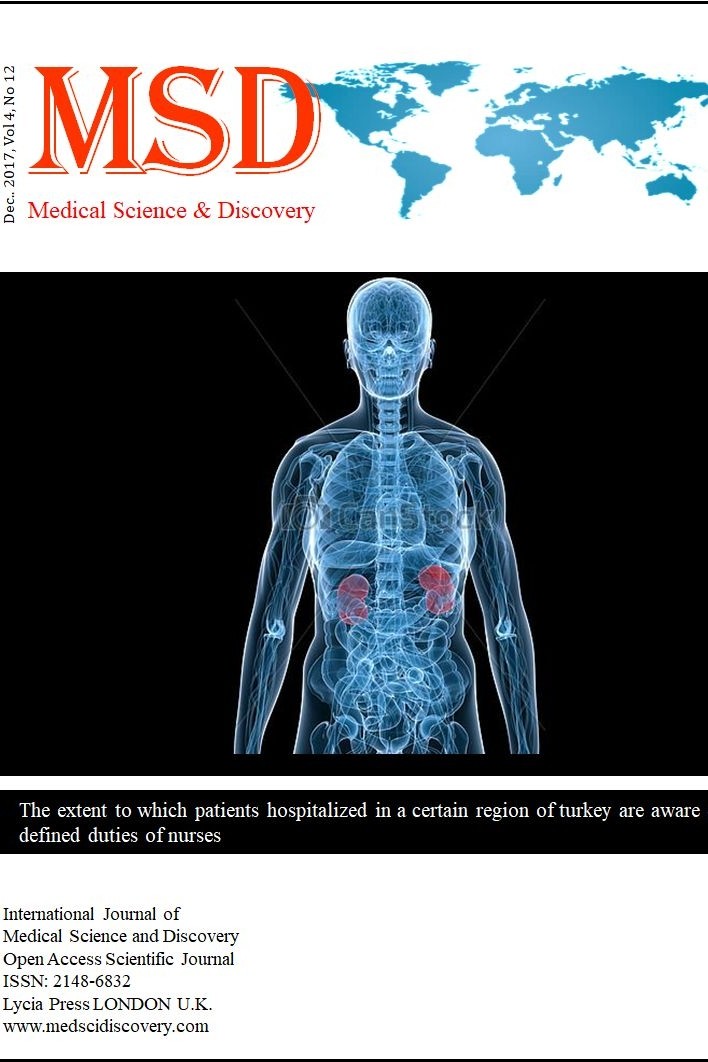Histopathological Review of Male Breast Cancer Cases
Histopathological Review of Male Breast Cancer Cases
Male breast cancer, Prognosis, Histopathology,
___
- Agrawal A, Ayantunde AA, Rampaul R, Robertson JF. Male breast cancer: a review of clinical management. Breast cancer research and treatment. 2007;103(1):11-21.
- Ni YB, Mujtaba S, Shao MM, Lacambra M, Tsang JY, Chan SK, et al. Columnar cell-like changes in the male breast. Journal of clinical pathology. 2014;67(1):45-8.
- Verschuur-Maes AH, Kornegoor R, de Bruin PC, Oudejans JJ, van Diest PJ. Do columnar cell lesions exist in the male breast? Histopathology. 2014;64(6):818-25.
- Nahleh Z, Girnius S. Male breast cancer: a gender issue. Nature clinical practice Oncology. 2006;3(8):428-37.
- Hill TD, Khamis HJ, Tyczynski JE, Berkel HJ. Comparison of male and female breast cancer incidence trends, tumor characteristics, and survival. Annals of epidemiology. 2005;15(10):773-80.
- Rathore AS, Kumar S, Konwar R, Srivastava AN, Makker A, Goel MM. Presence of CD3+ tumor infiltrating lymphocytes is significantly associated with good prognosis in infiltrating ductal carcinoma of breast. Indian journal of cancer. 2013;50(3):239-44.
- Giordano SH. A review of the diagnosis and management of male breast cancer. The oncologist. 2005;10(7):471-9
- Meguerditchian AN, Falardeau M, Martin G. Male breast carcinoma. Canadian journal of surgery Journal canadien de chirurgie. 2002;45(4):296-302.
- Copyright © 2014 The Author(s); This is an open-access article distributed under the terms of the Creative Commons Attribution
- License (http://creativecommons.org/licenses/by/4.0), which permits unrestricted use, distribution, and reproduction in any medium,
- provided the original work is properly cited.
- ISSN: 2148-6832
- Başlangıç: 2014
- Yayıncı: Zafer AKAN
Familial Recurrent Hydatidiform Moles: A rare case report
Fatma Eskicioglu, Isin Kaya, Esra Bahar Gur, Guluzar Arzu Turan
Complexion of Boric Acid with 2-Deoxy-D-glucose (DG) as a novel boron carrier for BNCT
Zafer AKAN, Hasan DEMİROGLU, Ugur AVCİBASİ, Gokhan OTO, Hulya OZDEMİR, Sabahattin DENİZ, Ali Sadi BASAK
Toxoplasma IgM positive in pregnancy: what does it mean from the perspective of the gynecologists?
Burcu Artunc ULKUMEN, Halil Gursoy PALA
Burcu Artunc Ulkumen, Safiye Ulucay, Burak Batir, Fatma Eskicioglu, H. Gursoy Pala, Sirri Cam
The analysis of doppler flow alterations in intrauterine growth restricted pregnancies
Burcu Artunc Ulkumen, H. Gursoy Pala, Fatma Eskicioglu, Yesim Baytur
Histopathological Review of Male Breast Cancer Cases
Emel Ebru PALA, Zubeyde Yildirim, Ulku Kucuk, Ebru CAKİR, Nilay SENKORKMAZ, Umit Bayol
A mortal accident caused by a broken toilet seat cover
Yildiray Zeyfeoglu, M. Sunay Yavuz, Tarik Ulucay, M. Ziya Kir, Faruk Aydin, Ilknur Kahraman, Gonca Tatar, Zafer Karadeniz, Mustafa Dalgic
